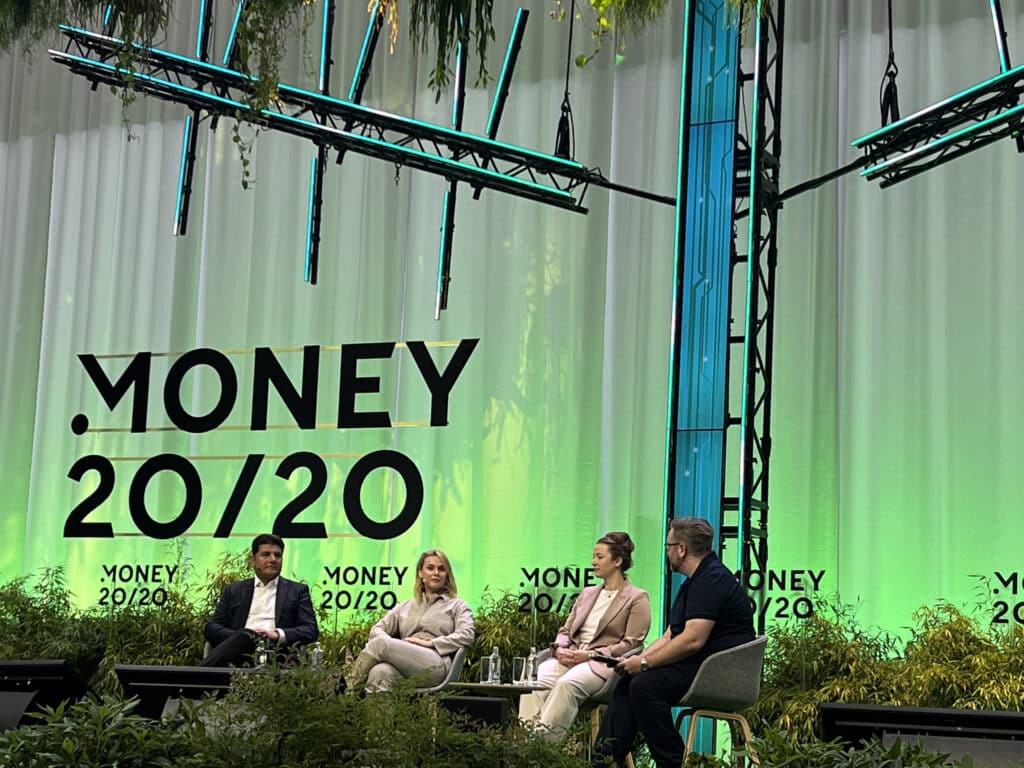
At a panel discussion at Money20/20, Ripple’s Cassie Craddock, Domin Network’s Ioana Surpateanu, and Kraken’s Kaushik Sthankiya explored the evolution of blockchain technology and its security implications of the emerging market.
All panelists agreed on the importance of merging traditional finance (TradFi) with blockchain technology to understand its wider impact and the future of blockchain.
Surpateanu noted, “Blockchain helps optimize and attract consumers in creative industries. The coexistence of TradFi and blockchain is already a reality and will continue to evolve.”
Throughout Money20/20, speakers have emphasized the importance of interoperability, and Surpateanu echoed this sentiment by stating that interoperability prevents fragmentation in blockchains and fosters innovation.
The panelists cited the need for centralized exchanges as a way to secure platforms for retail and institutional customers to engage with crypto.

A busy year for blockchain technology
Reflecting on the past year, the panel delved into the substantial growth of the crypto market, especially in the blockchain market.
“In 2017, while joining Citigroup, the mantra was ‘blockchain, not crypto.’ Since then, the focus has shifted back to infrastructure,” Surpateanu said. “We now talk about a crypto market cap exceeding $2.6 trillion USD.”
Surpateanu is focused on developing a technology that validates and authenticates data across different blockchain layers, allowing users to exchange digital items for physical ones — like tokenization. Many fashion and gaming companies are showing great interest in this technology as it helps them gather valuable insights and strengthen their user communities.
Sthankiya further highlighted Kraken’s growth and the evolving landscape of crypto.
“Crypto has matured significantly over the past twelve years. We now operate in 190 countries, offering over 200 tokens for trading. The safety, security, and regulatory compliance in the industry have vastly improved,” he said.
Blockchain in payments and banking
The conversation then turned to the practical applications of blockchain in payments. Craddock shared how cross-border payments have become faster and more efficient.
“It’s quicker to fly money to Australia than to send an international wire. Blockchain technology addresses this inefficiency,” Craddock stated.
Sthankiya highlighted Kraken’s role in facilitating large-scale transactions. He explained that institutional customers have a growing demand for the instant movement of substantial amounts of money worldwide, and the safety and security provided by centralized exchanges are paramount in meeting this demand.
Surpateanu also provided a critical viewpoint on banks’ integration with blockchain.
“Banks could do more to integrate into this ecosystem. While there are talented crypto-savvy teams within banks, regulatory concerns and a compliance-driven mentality often hold them back,” she said.